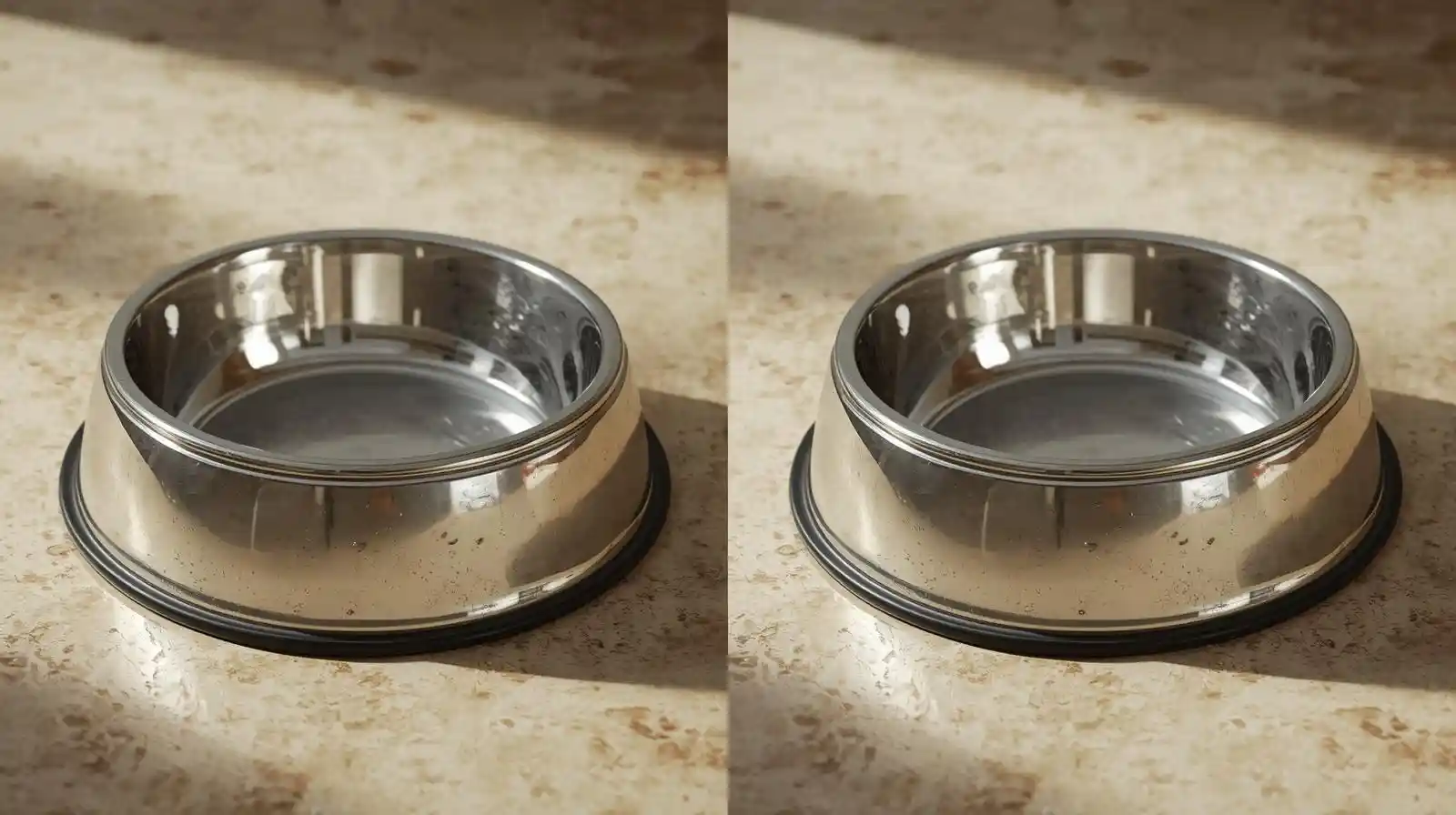Stainless steel bowls are a common choice for dog owners who prioritize durability and hygiene. This short, focused guide outlines the disadvantages of stainless steel dog bowls while acknowledging why the material is often recommended. It keeps to practical examples and simple buying advice so a discerning owner can weigh trade-offs quickly.
Why stainless steel is popular (brief)
Stainless steel is widely recommended for durability and hygiene: it’s hard to crack, relatively light, and often dishwasher-safe — factors that make it a frequent top pick in testing and veterinary advice.
Key disadvantages — what to watch for
1. Noise and clatter
Metal bowls make more sound than ceramic or plastic when pushed, knocked, or licked. In a small apartment or for a sound-sensitive dog, the constant clink of a stainless bowl can be annoying. Simple mitigation: use a rubber-bottomed model or place the bowl on a mat.
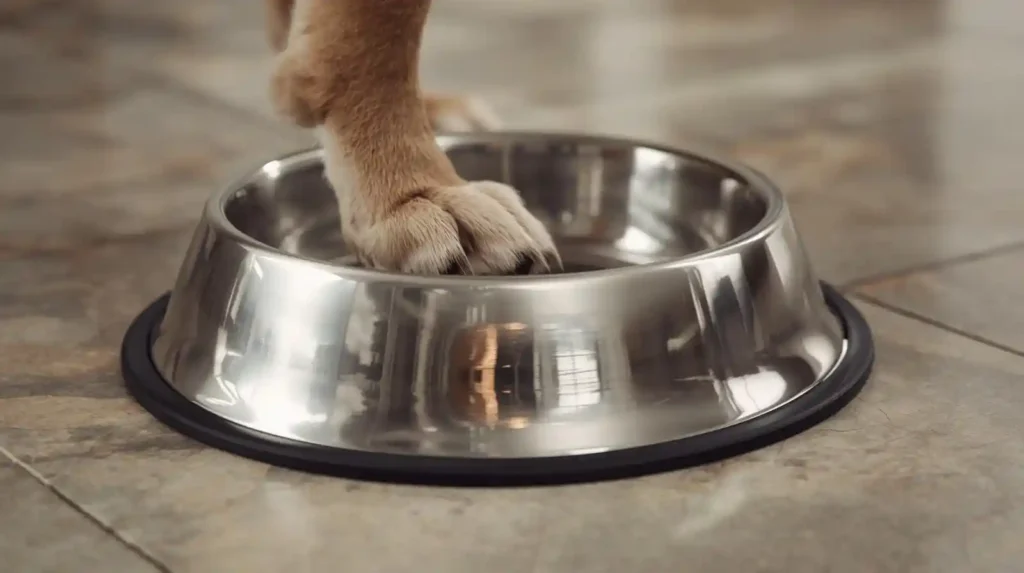
Stainless steel can scratch and dent. Deep scratches may trap food residue and bacteria and make thorough cleaning harder over time. Regular inspection and replacement when surfaces become badly marred reduce that risk. This drawback is noted in product comparisons and material guides.
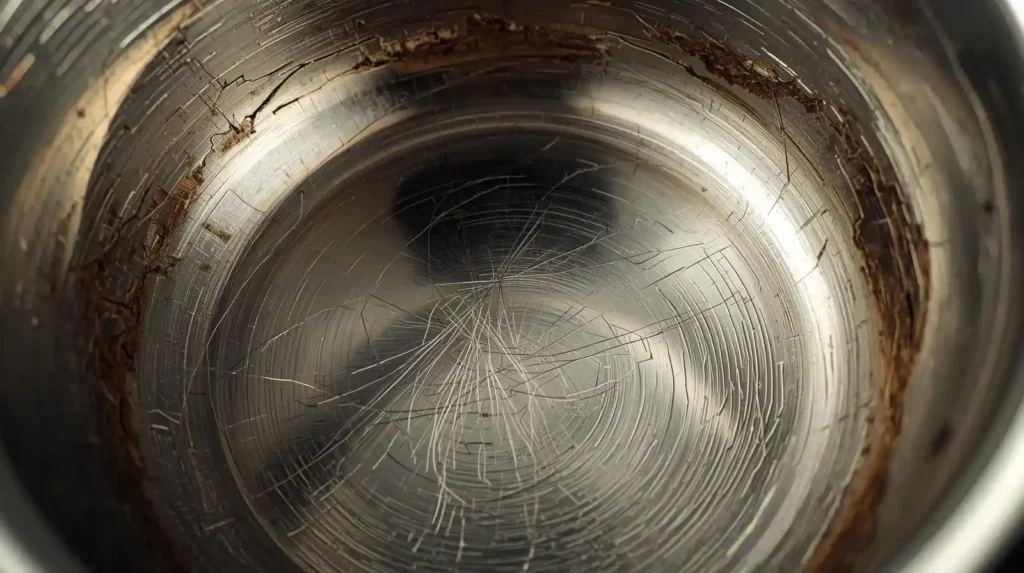
3. Metallic smell or taste (initial or low-quality items)
Some dogs react to a faint metallic odor on new stainless bowls or on low-grade items with residual processing oils. Washing new bowls thoroughly (dishwasher or hot soapy water) usually removes factory residues. For exceptionally picky dogs, owners sometimes switch material for indoor feeding.

4. Temperature conductivity
Metal conducts heat and cold. A bowl left in direct sun may warm food or water; on cold floors, the surface can feel chilly. For outdoor or uninsulated settings, owners should avoid leaving stainless bowls in extreme temperatures or use insulated holders.
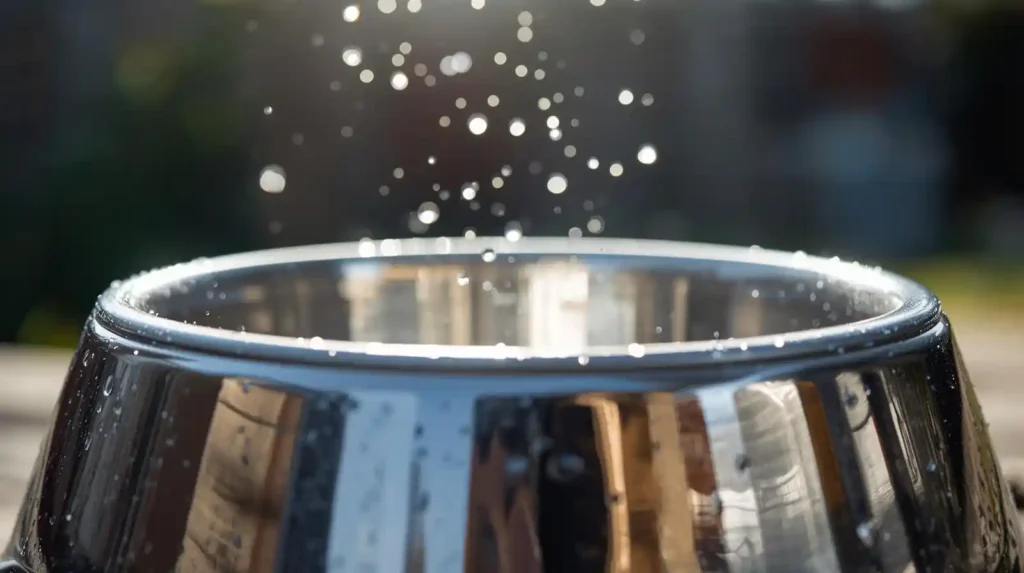
5. Possible metal sensitivity (rare)
True metal allergies in dogs are uncommon, but if a dog has known contact sensitivity (nickel, for example), the owner may want an alternative. Choosing high-grade, food-safe stainless (e.g., 18/8 or 304) reduces the chance of reactions. Veterinarians occasionally recommend ceramic or glass for known sensitivities.
6. Aesthetic and design limits
Stainless looks utilitarian. For owners who want decorative or home-matching bowls, ceramic provides more design options. Many households pair a stainless water bowl with a decorative ceramic food bowl to balance function and form.
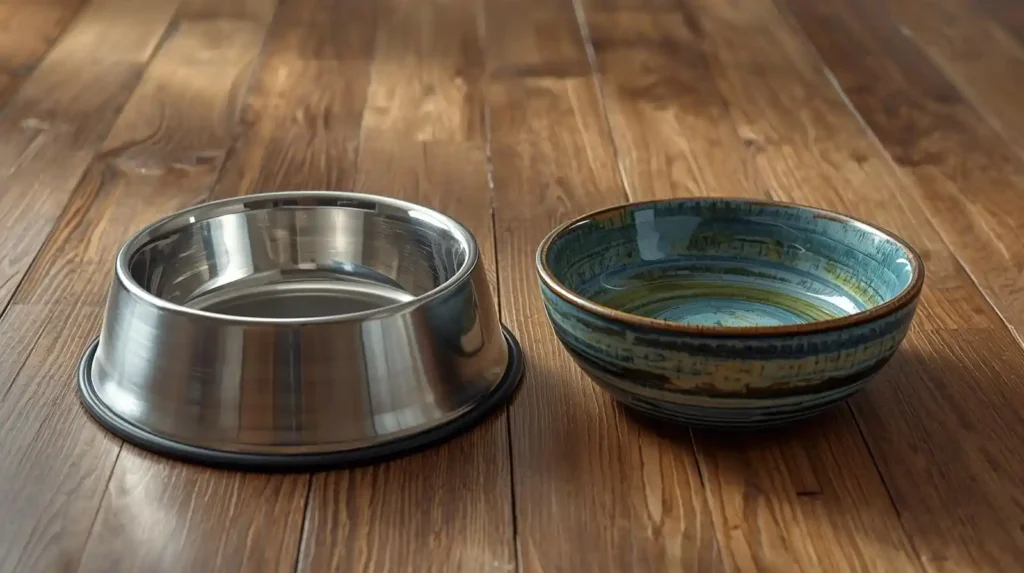
Practical examples
- Active outdoor dog: a durable stainless water bowl with a rubber base is practical, but leave it out of direct sun to avoid warm water.
- Small, style-conscious home: a stainless water bowl keeps hygiene high while a decorative ceramic bowl sits at mealtimes.
Recent product tests favor stainless steel for durability and cleanability, but they highlight features to pick — non-skid bases and thicker gauge metal for stability.
How these points compare to other materials
Plastic scratches more easily, creating grooves that can harbor bacteria — a common reason owners swap to stainless. Ceramic offers weight and style but can chip and break, which also creates bacteria traps. For a side-by-side take, resources comparing materials offer useful trade-offs. For a deeper material comparison, see Stainless Steel vs. Plastic and Ceramic Dog Bowls: An In-Depth Comparison.
Quick buying tips (minimized checklist)
- Choose food-grade stainless (18/8 or 304).
- Prefer bowls with a rubber or silicone base to cut noise and sliding.
- Inspect new bowls for machining residue; wash before first use.
- Avoid thin, flimsy bowls that dent easily.
- For shopping criteria, consult What to Look for When Buying a Stainless Steel Dog Bowl.
For a full primer on stainless steel bowls — use cases, maintenance, and top picks — the owner can consult a longer field guide like The Ultimate Guide to Stainless Steel Dog Bowls.
Conclusion
Stainless steel delivers dependable hygiene and durability with a few practical trade-offs: noise, scratches, thermal conduction, and limited aesthetics. For many owners the benefits outweigh the shortcomings — especially when the right model (non-skid base, food-grade metal, sturdy gauge) is chosen and inspected over time.
FAQ
-
Are stainless steel bowls hygienic?
Yes — their non-porous surfaces make them easier to sanitize than plastic, especially when dishwasher-safe models are used. (AKC) -
Will a stainless bowl give food a metallic taste?
New or low-quality bowls can retain factory odors. A thorough wash usually removes them. -
How often should stainless bowls be replaced?
Replace when deep scratches, dents, or corrosion appear; otherwise, they can last for years with regular cleaning. -
Do stainless bowls rust?
High-grade stainless resists rust; poor alloys or damaged protective layers may show corrosion and should be replaced. -
Can stainless bowls cause allergies?
Metal allergies in dogs are rare. If sensitivity is suspected, try a ceramic or glass bowl and consult a vet. -
Best setup for messy eaters?
Use a heavy, rubber-base stainless bowl or an elevated feeder with a catch tray to minimize spills; product testing highlights rubber bottoms and thicker gauges for messy dogs.

